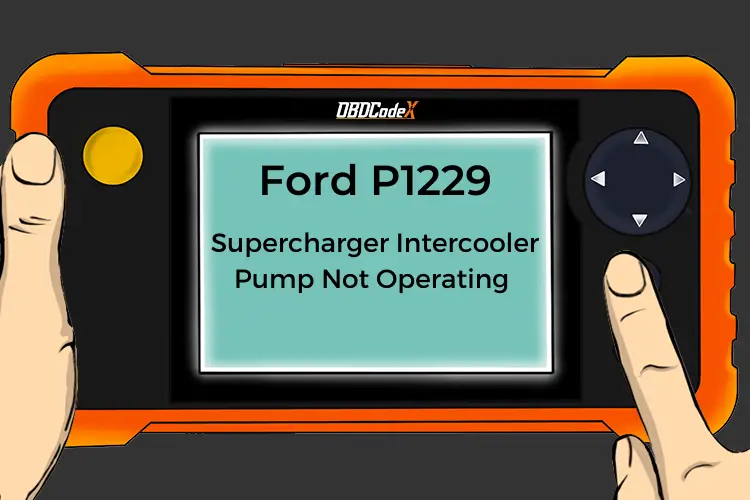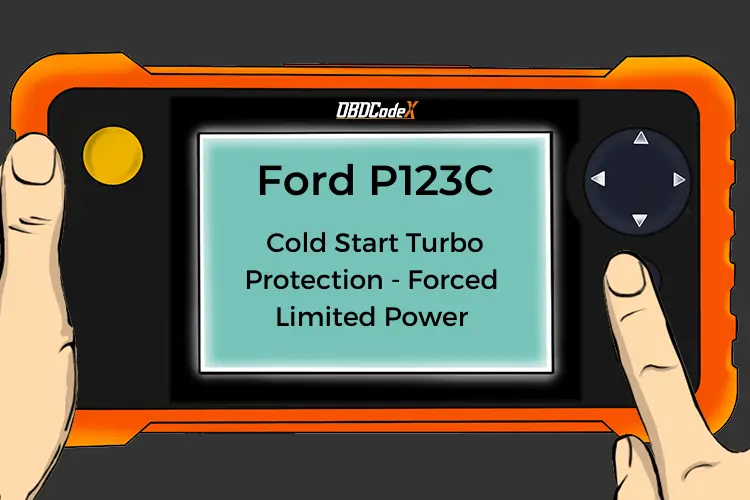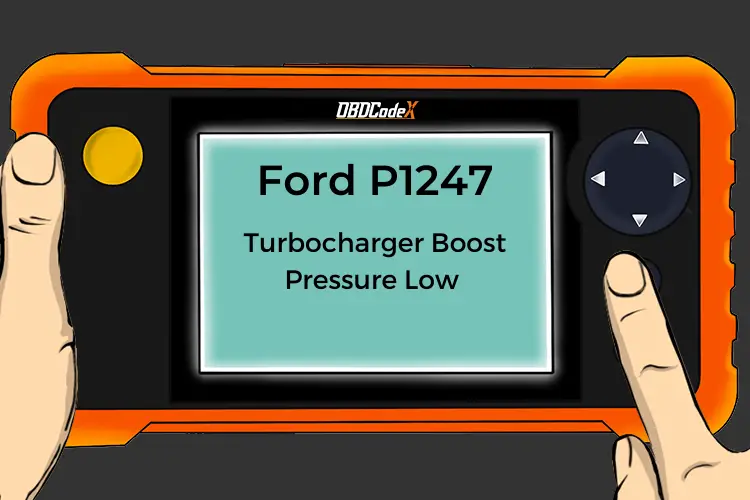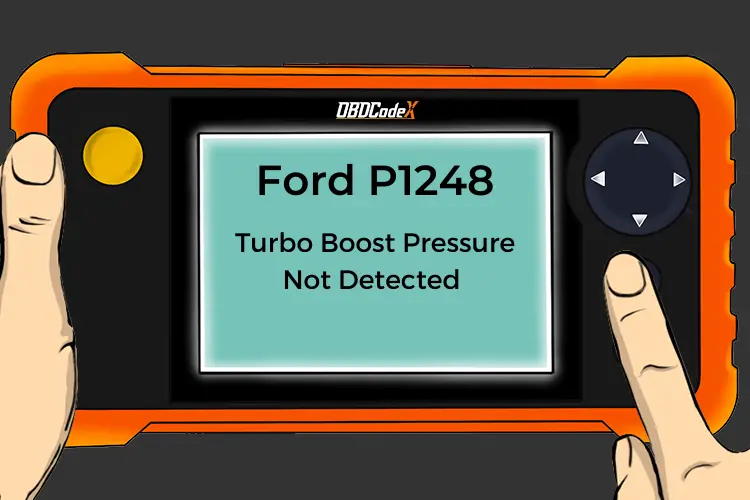P0299: Turbocharger/Supercharger A Underboost Condition
Is your scanner showing P0299?
No worries. We'll show you what it means and how to deal with it.
P0299: Turbocharger/Supercharger A Underboost Condition
OVERVIEWWhat Does The P0299 Code Mean?
The P0299 DTC code refers to a condition where the PCM/ECM (powertrain/engine control module) has detected that the bank “A” or single turbocharger or supercharger is not providing a normal amount of boost (pressure).
That could be due to a variety of reasons, which we detail below. On a normally operating turbocharged or supercharged engine the air going into the engine is pressurized and that’s part of what makes so much power for an engine of it’s size.
If this code is set, you will likely notice reduced power output. Turbochargers are driven from the exhaust exiting the engine to use a turbine to force air into the intake. Superchargers are mounted on the intake side of the engine and are typically belt driven to force more air into the intake, with no connection to the exhaust.
In the case of Ford vehicles, this may apply: “The PCM checks for a minimum throttle intake pressure (TIP) PID reading during engine operation, which indicates an underboost condition. This DTC sets when the PCM detects that the actual throttle intake pressure is less than the desired throttle intake pressure by 4 psi or more for 5 seconds.”
In the case of VW & Audi vehicles, the code definition is slightly different, it is “Boost Pressure Regulation: Control Range Not Reached.” As you can probably tell that’s basically just another way of stating an underb
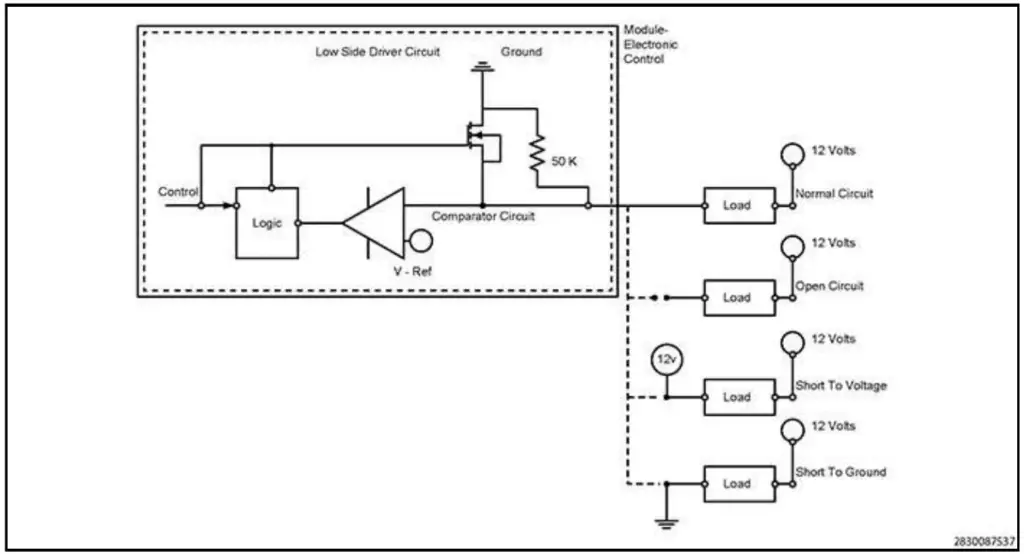
P0299 wiring diagram
oost condition.
What Are The Symptoms Of The P0299 Code?
Symptoms of a P0299 DTC may include:
- MIL (Malfunction indicator lamp) illumination
- Reduced power output from engine, possibly in a “limp” mode
- Unusual sounds from the engine/turbo
There would likely be no other symptoms.
What Are The Potential Causes Of The P0299 Code?
Potential causes of a P0299 turbo underboost code include:
- Intake (induction) air restriction or leak
- Failed or damaged turbocharger (sticking, binding, etc.)
- Faulty boost/charge pressure sensor
- Faulty wastegate bypass regulator valve (VW)
- Low fuel pressure condition (Isuzu)
- Sticking turbo nozzle control solenoid (Isuzu)
- Faulty injector control pressure (ICP) sensor (Ford)
- Low oil pressure (Ford)
- EGR system fault (Ford)
- Variable geometry turbocharger (VGT) actuator (Ford)
- VGT vanes sticking (Ford)
How Serious Is This P0299 Code?
The severity of this code can vary from moderate to severe. If you delay repair of this issue, you can potentially experience more extensive and costly damage.
How Can You Fix The P0299 Code?
Step 1
You’ll want to repair any other DTC codes if present prior to diagnosing this code. You will next want to search for Technical Service Bulletins (TSBs) that may apply to your year/make/model/engine configuration.
TSBs are bulletins put out by the auto manufacturer to provide information on known issues, commonly surrounding specific trouble codes like this. If there is a known TSB you should start with that diagnosis as it can save you time and money.
Step 2
Start with a visual inspection. Inspect the intake air system for cracks, loose or disconnected hoses, restrictions, blockages, etc. Repair or replace as required.
Step 3
Check the turbocharger wastegate regulating valve solenoid for correct operation.
Step 4
If the air induction system tests OK, then you’ll want to focus your diagnosis efforts on the charge pressure control, diverter valve (blowoff valve), sensors, regulators, etc. Really at this point you’ll want to refer to a vehicle-specific detailed repair manual for specific troubleshooting steps.
There are some known issues on certain makes and engines so also check out our car repair forums here and search using your keywords. For example, if you search around, you’ll find that a common fix for a P0299 in VWs is to replace or repair the diverter valve or wastegate solenoid. On the GM Duramax diesel, this code may mean the turbo housing resonator has failed. If you have a Ford, you’ll want to next check the wastegate regulating valve solenoid for correct operation.
Anecdotally in Fords, this seems to be found in EcoBoost or Powerstroke engine equipped vehicles such as F150, Explorer, Edge, F250/F350, and Escape. Regarding VW & Audi models, that may include A4, Tiguan, Golf, A5, Passat, GTI, Q5, and others. When it comes to Chevy and it’s mainly seen on the Cruze, Sonic, and Duramax equipped vehicles.
The information in this article is slightly generic in the fact that each model may have it’s own known fix for this code. Good luck with your repair! If you need help, just ask for free in our forums.
Recommended Parts
Below are some recommended auto parts to help you address the trouble code affecting your vehicle and get it running smoothly again:
>>> Turbocharger
>>> ICP Sensor
>>> Turbo Actuator for Cummins
Note: During the purchasing process, please check carefully whether the part you want to buy fits your car!
Check This Video For Reference
P0299 Infographic - 1 Minute Summary
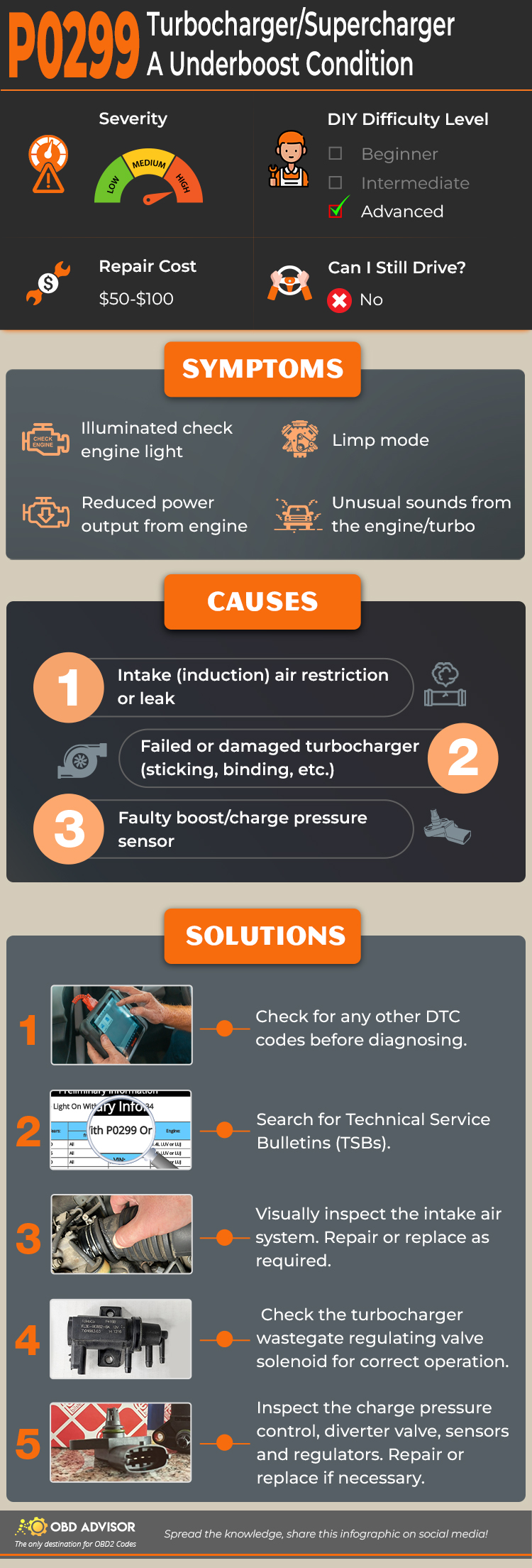
Reference Sources
Diagnostic Trouble Code (DTC) Charts and Descriptions for P0299 – Page 57.

